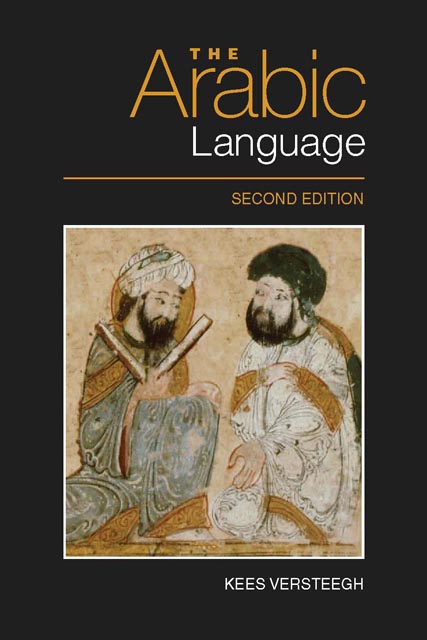Book contents
- Frontmatter
- Contents
- Preface to First Edition
- Preface to Second Edition
- List of Figures and Maps
- List of Tables
- Note on Transcription and Glossing
- 1 The Study of Arabic in the West
- 2 Arabic as a Semitic Language
- 3 The Earliest Stages of Arabic
- 4 Arabic in the Pre-Islamic Period
- 5 The Development of Classical Arabic
- 6 The Structure of Arabic
- 7 The Arabic Linguistic Tradition
- 8 The Emergence of New Arabic
- 9 Middle Arabic
- 10 The Study of the Arabic Dialects
- 11 The Dialects of Arabic
- 12 The Emergence of Modern Standard Arabic
- 13 Diglossia
- 14 Bilingualism
- 15 Arabic as a Minority Language
- 16 Arabic Pidgins and Creoles
- 17 Arabic as a World Language
- Bibliography
- List of Abbreviations
- Index
7 - The Arabic Linguistic Tradition
Published online by Cambridge University Press: 18 November 2022
- Frontmatter
- Contents
- Preface to First Edition
- Preface to Second Edition
- List of Figures and Maps
- List of Tables
- Note on Transcription and Glossing
- 1 The Study of Arabic in the West
- 2 Arabic as a Semitic Language
- 3 The Earliest Stages of Arabic
- 4 Arabic in the Pre-Islamic Period
- 5 The Development of Classical Arabic
- 6 The Structure of Arabic
- 7 The Arabic Linguistic Tradition
- 8 The Emergence of New Arabic
- 9 Middle Arabic
- 10 The Study of the Arabic Dialects
- 11 The Dialects of Arabic
- 12 The Emergence of Modern Standard Arabic
- 13 Diglossia
- 14 Bilingualism
- 15 Arabic as a Minority Language
- 16 Arabic Pidgins and Creoles
- 17 Arabic as a World Language
- Bibliography
- List of Abbreviations
- Index
Summary
Introduction
Western grammars of Classical Arabic (see Chapter 6),almost without exception, use a Greco-Latingrammatical model and hardly ever mention thedifferences between this model and that of theArabic grammarians. The choice of the Greco-Latinmodel serves a didactic purpose, because thesegrammars are intended for the teaching of Arabic tonon-Arabophones, who are usually more familiar withthe Greco-Latin model of school grammar. Either maybe assumed to give an adequate description of thestructure of Classical Arabic, but the framework ofthe Arabic grammarians served exclusively for theanalysis of Arabic and therefore has a specialrelevance for the study of that language. From theperiod between 750 and 1500 we know the names ofmore than 4,000 grammarians who elaborated acomprehensive body of knowledge on their ownlanguage. In this chapter, we shall present someexamples of their theories, which provide a novelway of looking at the language from the privilegedpoint of view of its own scholars. Most Arabicgrammars of Arabic follow the order established bythe first grammarian, Sībawayhi (d. 177/793?), inhis Kitāb and startwith syntax, followed by morphology, with phonologyadded as an appendix. The Western terms used herecorrespond roughly to the two traditional componentsof Arabic linguistics: taṣrīf, usually translated as‘morphology’, and naḥw, usually translated as ‘syntax’ (thelatter term is also used to denote the discipline ofgrammar as a whole). But whereas we assign tomorphology the study of all alterations of words,the Arabic grammarians assign the study ofdeclensional endings to naḥw and all remaining changes in theform of words, for example, plural endings andderivational patterns, to taṣrīf.
A remark is in order here concerning the practice oftranslating Arabic technical terms with technicalterms from the Western model. The names of thecomponents of grammar illustrate the lack ofcorrespondence between the two sets of terms.Another example is that of the term rafʿ, usually equated with‘nominative’, which introduces a Greco-Latin view of‘declension’ that is foreign to this framework. Theterm ʿamal in Arabicgrammar indicates the syntactic effect of one wordon another; this term is often translated as‘rection’, which suggests a parallel withGreco-Latin grammar, or as ‘governing’, whichinevitably suggests a parallel with modernlinguistic theories.
- Type
- Chapter
- Information
- The Arabic Language , pp. 107 - 125Publisher: Edinburgh University PressPrint publication year: 2014

